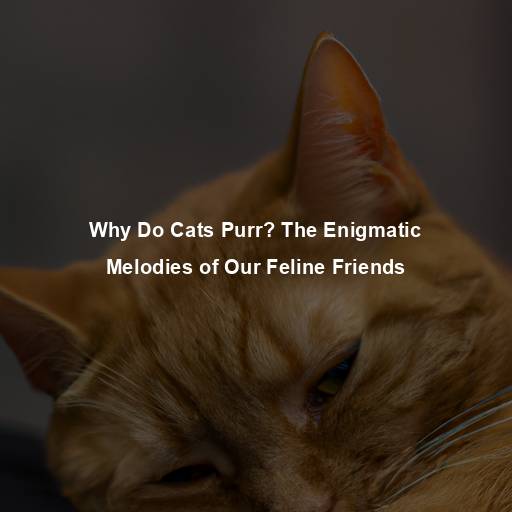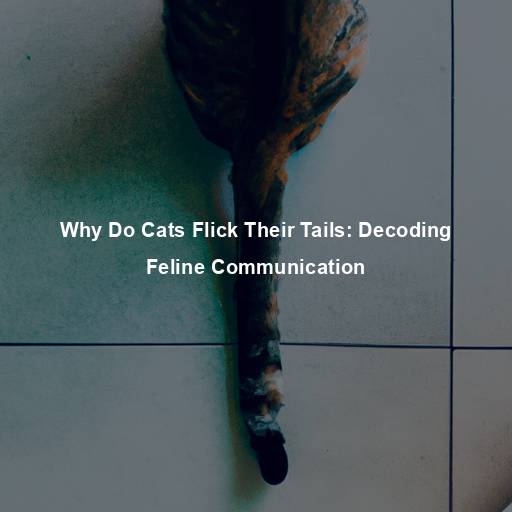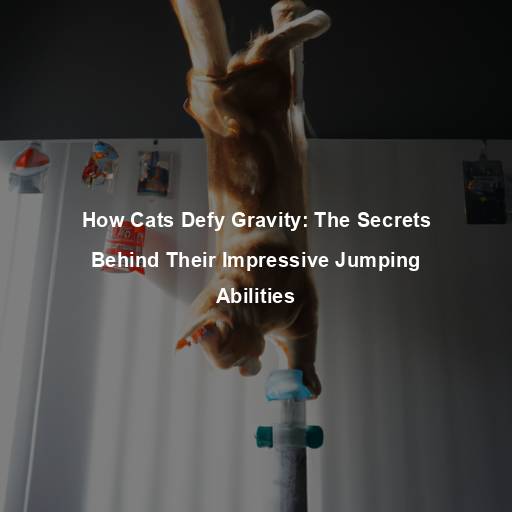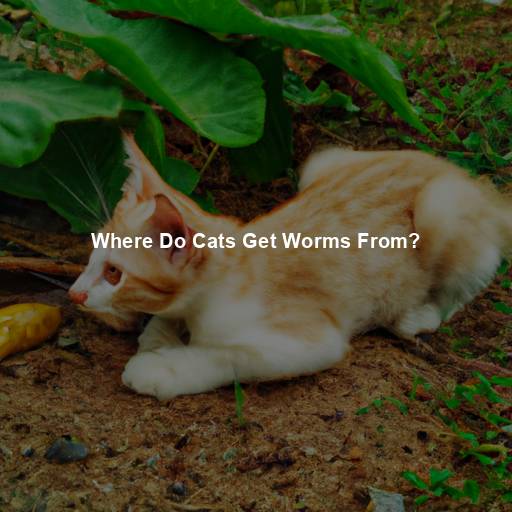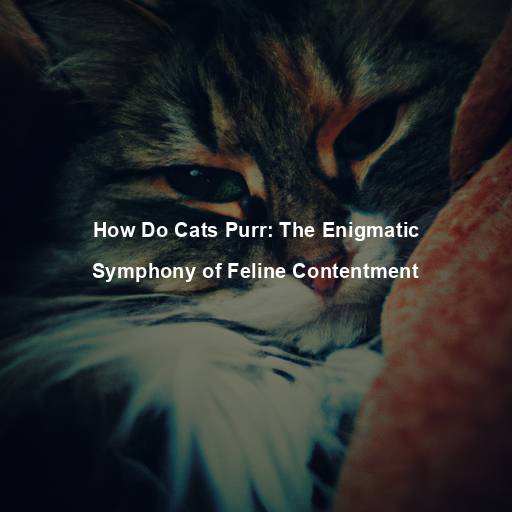How Are Cats Orange: Unraveling the Mystery Behind Feline Fur Colors
Last Updated on July 10, 2023 by Evan
Contents [hide]
- 1 The Fascinating World of Feline Fur Colors
- 2 Unraveling the Mystery Behind Orange Cats
- 2.1 Are All Orange Cats Male?
- 2.2 Can Two Orange Cats Produce Non-Orange Kittens?
- 2.3 The Charming Personalities of Orange Cats
- 2.4 Famous Orange Cats in Pop Culture
- 2.5 Caring for Your Orange Furry Friend
- 2.6 The Enigmatic Beauty of Orange Cats
- 2.7 Pale Cream: The Diluted Orange
- 2.8 Deep Ginger: Intensity in Richness
- 2.9 Red Tabby: A Combination of Colors
- 2.10 Tortoiseshell: A Fiery Mosaic
- 2.11 Calico: A Tri-Color Marvel
- 2.12 Ginger and White: A Classic Combination
- 3 The Symbolism of Orange Cats
- 4 Celebrating the Orange Feline Beauty
- 5 FAQs: How Are Cats Orange?
- 5.1 How do cats get their orange color?
- 5.2 Are all orange cats the same shade of orange?
- 5.3 Can orange cats be male or female, or is one gender more likely to be orange?
- 5.4 Are all orange cats tabbies?
- 5.5 Can orange cats have other colors or patterns in their coat?
- 5.6 Can the shade of orange change as a cat ages?
The Fascinating World of Feline Fur Colors
Prepare to be amazed as we journey into the captivating world of feline genetics! From the sleek ebony coats of black panthers to the vibrant hues of orange tabbies, cats have an incredible array of coat colors that never fail to leave us in awe. Today, we dive deep into the perplexing question: how do cats become orange? Join us on this mind-boggling adventure as we uncover the enigmatic secrets that give our feline friends their mesmerizing and eye-catching orange fur.
Understanding Feline Genetics
To comprehend how cats acquire their distinctive colors, we must first explore the realm of feline genetics. Just like humans, cats possess genes that determine their physical characteristics, including their coat colors. These genes come in pairs, with one inherited from each parent.
The Role of Melanin
Melanin, a pigment responsible for hair, skin, and eye color in various species, plays a vital role in feline coat coloration. There are two types of melanin: eumelanin, which produces black and brown colors, and pheomelanin, which creates red and yellow hues.
The Orange Gene: O Gene
Unraveling the mysterious secrets of feline genetics, experts have uncovered the enigmatic O gene, cryptically referred to as the orange gene. This elusive genetic powerhouse holds the key to the mesmerizing allure of vibrant orange fur in cats. In a twist of complexity, its placement on the enigmatic X chromosome has surreptitiously orchestrated a divergent inheritance pattern between the genders, further shrouding this genetic phenomenon in perplexity.
Male Cats: The XY Dilemma
Male cats have one X and one Y chromosome. Since the O gene is situated on the X chromosome, a male cat can only inherit the orange coat color if he receives the O gene from his mother. Therefore, male cats with orange fur are relatively rare compared to their female counterparts.
Female Cats: A Tale of Two X’s
Female cats, on the other hand, have two X chromosomes. If a female cat inherits the O gene from either parent, she will display the orange coat color. In cases where a female cat inherits the O gene from both parents, she may exhibit a richer, more intense shade of orange.
The Dilution Gene: D Gene
Did you know that there’s more to a cat’s coat color than just a single gene? It turns out that besides the O gene, there’s another sneaky gene called the D gene that likes to play with the intensity of that gorgeous orange hue. This mischievous D gene has the power to dilute the pigment, leading to a wide spectrum of coat colors, ranging from a delicate pale cream to a striking deep ginger. And here comes the twist – when a kitty inherits two copies of the D gene, it reveals a whole new shade of orange, known as cream.
Tabby Patterns: The Agouti Gene
Have you ever found yourself entranced by the mesmerizing allure of a tabby cat’s intricate markings? These unique patterns, whether they be stripes, spots, or swirls, are like a puzzle waiting to be unraveled. It’s truly fascinating how the agouti gene, like a master artist, paints these exquisite designs onto feline fur. And to make things even more bewitching, this extraordinary gene interacts with the enigmatic O gene, producing an array of mesmerizing variations in orange tabby cats.
Other Factors Affecting Feline Coat Colors
While the O gene is primarily responsible for the orange fur in cats, various factors can influence its expression. Environmental factors, such as temperature and sunlight exposure, can cause slight changes in the intensity of the orange color. Additionally, certain health conditions and genetic mutations can alter the appearance of a cat’s coat color.
Unraveling the Mystery Behind Orange Cats
Now that we have explored the genetics behind orange fur in cats, let’s unravel the mystery behind some common questions and misconceptions related to this captivating coloration.
Are All Orange Cats Male?
You won’t believe it, but let me blow your mind with a little-known fact: not all orange cats are dudes. I know, right? We always thought it was a boy’s club, but turns out the ladies can rock that fiery fur too. It all comes down to the genes – while male kitties need that special O gene from their mama to sport that citrusy coat, the ladies only need it from one parent.
Can Two Orange Cats Produce Non-Orange Kittens?
Coat colors in cats have always been a captivating palette of mysteries and intricacies, leaving even the most knowledgeable experts astounded. The enigmatic world of genetics unveils its bewitching allure as we explore the phenomenon of non-orange kittens, born to parents both adorned in fiery hues. While the timeless O gene holds an undeniable sway in coat color determination, a myriad of other perplexing genes lurk in the shadows, weaving a mesmerizing tapestry of dilution, tabby patterns, and unforeseen complexities. Within a single litter, nature’s artistic hand manifests itself, bestowing upon us an awe-inspiring array of hues, an enigmatic marvel that leaves us spellbound.
The Charming Personalities of Orange Cats
There’s something undeniably captivating about orange cats. Their vibrant coat color is just the tip of the iceberg when it comes to the charm they exude. These lively felines appear to possess a special concoction of friendliness, playfulness, and affection, making them quite the popular choice among cat enthusiasts. While the scientific community remains undecided on this matter, countless owners stand by the fact that their orange companions possess an irresistibly delightful nature.
Famous Orange Cats in Pop Culture
Orange cats have also made their mark in pop culture, captivating audiences with their charm and charisma. From Garfield, the lasagna-loving comic strip cat, to the lovable Hobbes from Calvin and Hobbes, orange cats have become beloved characters in literature, animation, and film.
Caring for Your Orange Furry Friend
From the striking hues of a vibrant orange coat to the mesmerizing allure of a subtle shade, feline companions in every color deserve our unwavering dedication to their health and well-being. Ensuring that your adorable orange ball of fur receives proper care takes a mix of knowledge and love. Here, we present top-notch tips that will undoubtedly make your furry friend purr with delight and keep you utterly captivated in their mesmerizing ways.
-
Regular Veterinary Care: Schedule routine check-ups with a veterinarian to ensure your cat receives necessary vaccinations, preventive treatments, and overall health assessments.
-
Balanced Diet: Provide your cat with a nutritionally balanced diet that meets their specific dietary needs. Consult with your veterinarian to determine the appropriate food and feeding schedule for your feline friend.
-
Grooming: Regular grooming sessions help keep your cat’s coat healthy and free from mats. Brushing your cat’s fur not only removes loose hair but also strengthens the bond between you and your furry companion.
Introducing Environmental Enrichment: Dive into the world of cat playtime and offer your feline companion a delightful array of captivating toys and engaging scratching posts to satiate their innate desires and ward off any traces of monotony. Unleash a whirlwind of excitement as your cat embarks on a journey of exploration, keeping their sharp minds and agile bodies enthralled. With a plethora of options at your disposal, ensuring that your beloved companion thrives in a stimulating environment has never been easier.
When it comes to ensuring the best health for your furry friend and avoiding unexpected little surprises, spaying or neutering your cat can work like a charm. Not only does it help to control the population of kitties and minimize the risk of certain health woes, but it also grants your beloved feline a smoother and happier life. So why not opt for this responsible choice and give your fur baby the best shot at a purr-fect future?
In today’s fast-paced and unpredictable world, ensuring the safety of our feline companions is of utmost importance. By embracing measures that prioritize their well-being, such as keeping them indoors or providing a secure outdoor enclosure, we can shield them from the unforeseen dangers that lurk outside. From the chaotic realm of traffic accidents to potential clashes with other animals, and even the invisible threats of disease, these safety measures act as a shield, offering peace of mind to both cat and owner alike.
Keeping your feline friend healthy and energized is no small feat, but regular exercise is the key to a happy and fulfilled cat. Spark their curiosity with interactive play sessions that stimulate their natural instincts, and don’t forget to provide them with climbing structures or cat trees to satisfy their innate need to explore. Embrace the joy of watching your kitty indulge in bursts of playful energy and provide them with the purrfect environment for their daily adventures.
The Enigmatic Beauty of Orange Cats
In conclusion, the orange fur of cats is a captivating phenomenon rooted in genetics and influenced by various factors. The O gene, along with the D gene and agouti gene, determines the intensity of the orange color and the presence of tabby patterns. While male orange cats may be less common, female orange cats enchant us with their vibrant hues. Whether they possess a lively personality or have graced the pages of our favorite books, orange cats continue to capture our hearts with their enigmatic beauty.
While we have explored the genetic basis of orange fur in cats, it is important to note that the orange color can manifest in different shades and variations. Let’s take a closer look at some of the distinct hues within the orange spectrum.
Pale Cream: The Diluted Orange
When it comes to cats and their coats, there’s an intriguing category known as diluted orange. These feline beauties have a unique genetic makeup, with two copies of the D gene that work their magic by toning down the intensity of the orange pigment. The result is a stunning palette of pale cream, as if their fur has been touched by a gentle brush of delicate color. But don’t be fooled by their light appearance – their enchanting undertones of orange still shine through, creating a captivating visual feast for the eyes.
Deep Ginger: Intensity in Richness
In the realm of feline diversity, we encounter a fascinating realm where cats don a mesmerizing shade of deep ginger. These captivating creatures have the extraordinary privilege of inheriting the O gene from both of their parental figures, resulting in a magnificent explosion of intense orange hues. Filled with warmth and exuding an opulent aura, their fur enthralls the beholder with its enchantingly rich and vibrant palette.
Red Tabby: A Combination of Colors
Orange cats have always been admired, and the red tabby is no exception with its striking mixture of vibrant orange and intricate tabby patterns. The magic behind their mesmerizing appearance lies in the enchanting dance between the O gene and the agouti gene, giving birth to a tapestry of stripes, spots, or swirls that adorn their coats, making each red tabby a unique masterpiece in its own right. It’s no wonder these captivating felines continue to captivate our hearts with their burst of colors and perplexing patterns.
Tortoiseshell: A Fiery Mosaic
Tortoiseshell cats, also known by their endearing nickname “torties,” possess a mesmerizing kaleidoscope of colors that weave together, encompassing vibrant shades of fiery orange. Through a combination of the O gene and other untamed genes, they manifest captivating splashes of ebony or chocolate that dance alongside the warm orange hues. The distribution of these alluring hues paints a unique picture on each tortoiseshell feline, unveiling an ever-changing masterpiece that leaves us in awe and wonder.
Calico: A Tri-Color Marvel
Calico cats, much like their tortoiseshell counterparts, possess a mesmerizing blend of vibrant hues. These captivating creatures have the O gene and are adorned with patches of mesmerizing white, black, and orange. The interplay between these contrasting colors creates an enchanting tapestry on their coats that never ceases to bewilder and allure.
Ginger and White: A Classic Combination
Step into the captivating world of ginger and white cats, those enchanting beings with an irresistible fusion of orange and white fur. Behold, for they bear the mystical O gene, interwoven with other elusive genes, conjuring intricate patterns of snowy patches amidst their fiery coats. Prepare to be astounded by their mesmerizing display of contrasting colors, where vibrant oranges intertwine with pure whites, forming a mesmerizing symphony of hues that bewitch the eye.
The Symbolism of Orange Cats
Beyond their physical appearance, orange cats have acquired symbolic meanings across various cultures. These symbolic interpretations have further contributed to the allure and fascination surrounding cats with orange fur.
Good Fortune and Prosperity
Across various societies and traditions, there exists a captivating belief in the mystical powers of orange felines, for they supposedly bear the gift of auspiciousness and affluence to those fortunate souls who call them their own. The radiant hue of these cats is intricately intertwined with sentiments of warmth, plenitude, and an overwhelming surge of positivity. Thus, to possess an orange cat is to invite an enchanting beacon of fortune and bountiful blessings into one’s life.
Creativity and Inspiration
In the realm of feline companions, the enigmatic orange cats take on a role that transcends ordinary companionship. They embody a captivating aura of creativity and inspiration, casting a bewitching spell on the minds of artists, writers, and other imaginative souls. The vibrant hue of their fur, a mesmerizing blend of warmth and radiance, has been known to kindle the fires of ingenuity and awaken dormant sparks of the imagination. In the company of these exceptional feline muses, a realm of boundless possibilities unfurls, where artistic souls find solace and their creative spirits soar to unforeseen heights.
Sociability and Playfulness
When it comes to feline companions, the enigmatic orange cats undoubtedly steal the spotlight. These captivating creatures effortlessly exude a perplexing blend of sociability and playfulness, casting an irrevocable charm upon all who cross their path. Known for their uncanny ability to foster deep connections with their human counterparts, these vivacious felines infuse every abode they inhabit with an unparalleled sense of delight and vibrancy. A genuine treasure for any household seeking a burst of unwavering joy and companionship.
A Source of Comfort
There’s an undeniable connection we share with orange cats that goes beyond words. They have this uncanny ability to wrap us in their warm, affectionate embrace when life gets tough. They become our constant companions, offering solace and a comforting presence, grounding us amidst the chaos. These vibrant feline friends bring a sense of security that words fail to capture, weaving their way into our hearts with their burst of orange charm.
Celebrating the Orange Feline Beauty
As we draw near the end of unraveling the enigmatic allure of orange felines, it would be remiss not to bask in the bewitching charm they effortlessly bestow upon our existence. From the ethereal ivory shades that whisper of delicate elegance, to the fiery amber tones that ignite a sense of fiery passion, or the intricate tapestry of patterns that grace their fur, these enchanting creatures never cease to mesmerize us with their entrancing visage.
Beyond their physical allure, these feline companions offer us love, companionship, and endless moments of joy. Let us celebrate the orange feline beauty and cherish the special bond we share with these extraordinary creatures. Whether they are curled up on our laps or exploring the world with their playful spirit, orange cats continue to inspire and brighten our lives with their vibrant presence.
FAQs: How Are Cats Orange?
How do cats get their orange color?
Did you know that cats can sport a vibrant orange coat because of a fascinating genetic quirk called “orange tabby?” This intriguing trait can be attributed to a peculiar gene known as the “O gene,” which is also fondly dubbed the “orange gene” or “O allele.” When a feline inherits this gene from both of its parents, it manifests as a captivating shade of orange, offering a burst of color to the feline world. It’s yet another example of the bewildering wonders that nature has in store for us!
Are all orange cats the same shade of orange?
When it comes to orange cats, there’s a world of shades to delight in. From soft, almost ethereal hues to rich, vibrant tones that demand attention, no two felines are quite the same. The intriguing palette of oranges that grace these kitties’ fur is a result of a captivating dance between genetics, breeding, and the unique quirks that make each cat an individual. So, prepare to be astounded by the mesmerizing spectrum that these magnificent orange tabbies bring to the table.
Can orange cats be male or female, or is one gender more likely to be orange?
Did you know that orange cats can come in both genders? It’s true! While it’s often observed that there are more male orange cats running around, females can also rock the iconic orange tabby look. Want to know why there’s a higher ratio of orange boys? It all comes down to genetics. The gene responsible for their vibrant coat color is located on the X chromosome, and since males possess only one X chromosome, it’s more likely for the orange gene to be activated in their fur. So, next time you spot an orange feline, don’t assume anything about their gender – they might just surprise you!
Are all orange cats tabbies?
No, not all orange cats are tabbies. Tabby refers to a specific coat pattern characterized by stripes, swirls, or spots. While many orange cats do have tabby patterns, there are also solid orange cats without any discernible pattern. These solid orange cats are often referred to as “marmalade” or “ginger” cats.
Can orange cats have other colors or patterns in their coat?
Did you know that orange cats are not just limited to one color or pattern in their coat? It’s true! Along with the classic tabby patterns, these vibrant felines can also sport splashes of white on their fur, adding a dash of diversity to their appearance. But it doesn’t stop there – some orange cats may even surprise you with tortoiseshell or calico patterns, thanks to the magical interplay of various color genes with the prominent orange tabby gene. The world of orange cats is bursting with a mesmerizing range of possibilities, leaving us perplexed and captivated by their enigmatic beauty. So next time you encounter an orange cat, keep your eyes peeled for the delightful surprises hiding within their colorful coats!
Can the shade of orange change as a cat ages?
Yes, the shade of orange in a cat’s coat can change as they age. Some orange cats may become darker or lighter over time, similar to how human hair color can change with age. The extent of color change can vary among individual cats and might be influenced by factors such as sun exposure, hormonal changes, or general health.


